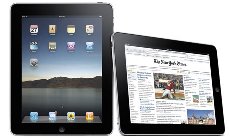Apple, Android Catch Up To RIM In The Enterprise

A report from Good Technology has found that consumers are using Apple iOS and Google Android devices as part of their jobs
A new mobile device activation report from Good Technology shows that Apple’s iPhone and iPad and smartphones based on Google’s Android operating system are being adopted by US consumers to help with their enterprise work, potentially threatening RIM’s dominance of the enterprise with its BlackBerry products.
The mobile messaging and device management software maker said devices based on Apple’s iOS accounted for Apple iOS devices represented 56 percent of net new activations in the US from June 2010 through September 2010.
Strong iOS adoption
Android smartphones accounted for 28 percent of net new activations over that period (up from 20 percent in the first quarter), while Windows Mobile devices represented 15 percent of net new activations over that period, thanks to the popular HTC Cedar.
 Hewing to the strong Apple iOS adoption, the company’s iPhone 4 led all device activations among Good’s enterprise customers, which span some 4,000 accounts. The device, which only launched in the US in late June, has sold several million units.
Hewing to the strong Apple iOS adoption, the company’s iPhone 4 led all device activations among Good’s enterprise customers, which span some 4,000 accounts. The device, which only launched in the US in late June, has sold several million units.
The iPhone 3GS ranked second on Good’s short list of top five most-activated devices, showing its staying power despite being more than a year old. Apple’s iPad, which is believed to have sold as many as 10 million units since hitting the market in April, followed, “showing that enterprise customers want to use these new tablet devices for business”.
At No. 4, the Android-based Motorola Droid X, launched from Verizon Wireless in July, took the top prize as the most frequently activated Android device in September.
Good said it expects to see Android tablets, such as Samsung’s Galaxy Tab or devices from Dell, Motorola or LG, to rate in its activation studies when they become widely available in the US.
RIM still the leader
Some market context is key for this report. Good is counting only users of its own messaging management software. The company doesn’t count new activations for rival RIM because RIM only enables BlackBerry Enterprise Server for corporate email access.
RIM is still easily the US smartphone market leader with some 37 to 40 percent of market share versus roughly 24 percent for iOS and 20 percent for Android, according to comScore.
However, RIM, whose BlackBerry devices have been corporate mobile mainstays for a decade, is losing share to iPhone and Android.
Companies are increasingly letting users choose their mobile handsets for enterprise use, which is partly responsible for the decline in RIM’s smartphone market share. Business users don’t want to carry a BlackBerry for work use and another handset for personal use. That has opened the door for smartphone platforms such as iPhone and Android.
Good, which began studying this trend in earnest since launching its mobile management software for iPhone and Android handsets last December, noted that many businesses were letting workers use their personally purchased iPhone or Android handsets to communicate for business purposes.
“Employees want device choice, while employers don’t want to pay extra to support each worker’s unique work device,” Good noted in its report.
Also worth mentioning is that Windows Phone 7 launches on 11 October, which provides new grist for Good’s next mobile device activation report.
Good said it doesn’t expect to see Windows Mobile devices vanish from the rankings in the foreseeable future, due to their continued use by government and other enterprises.